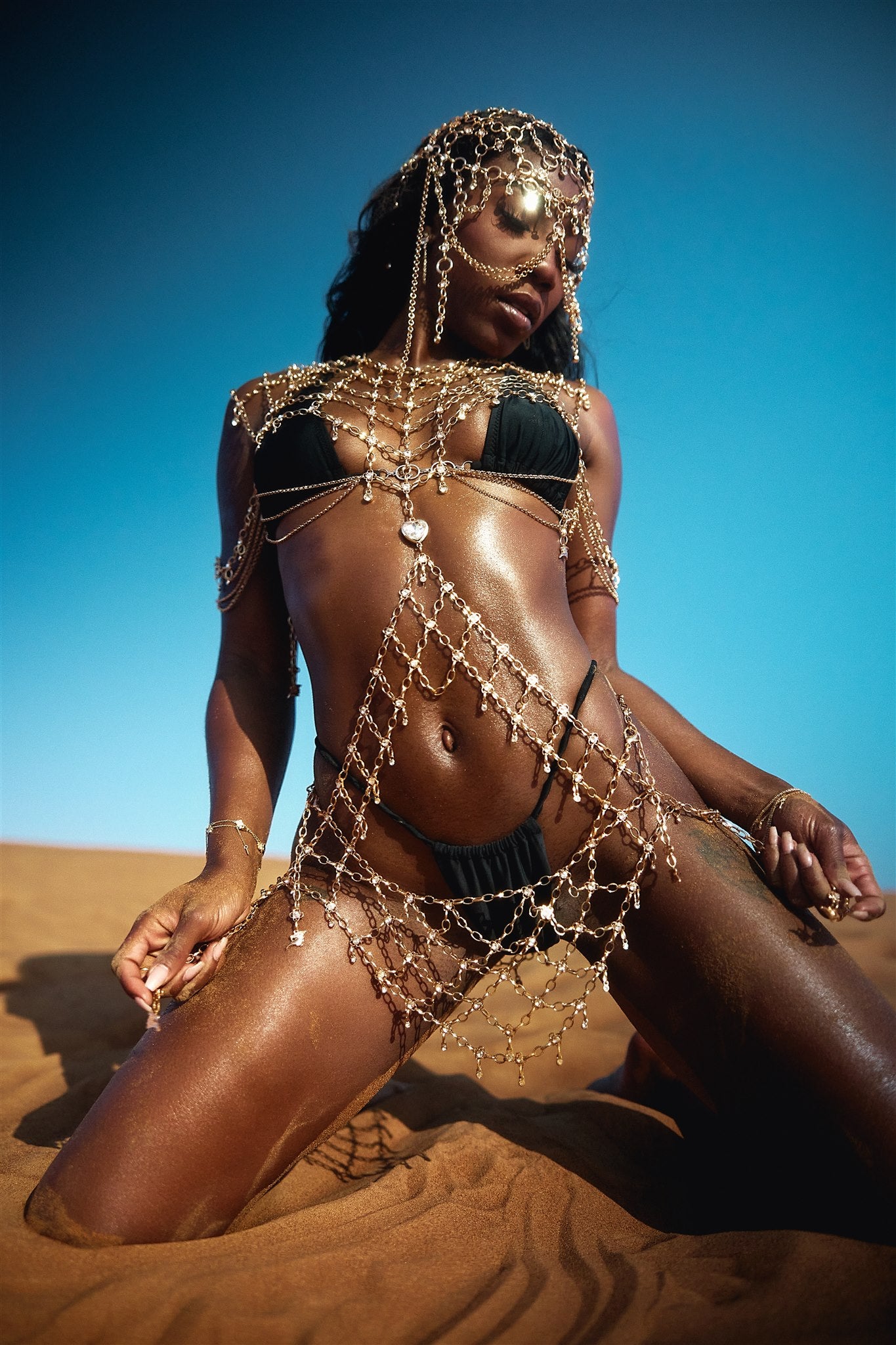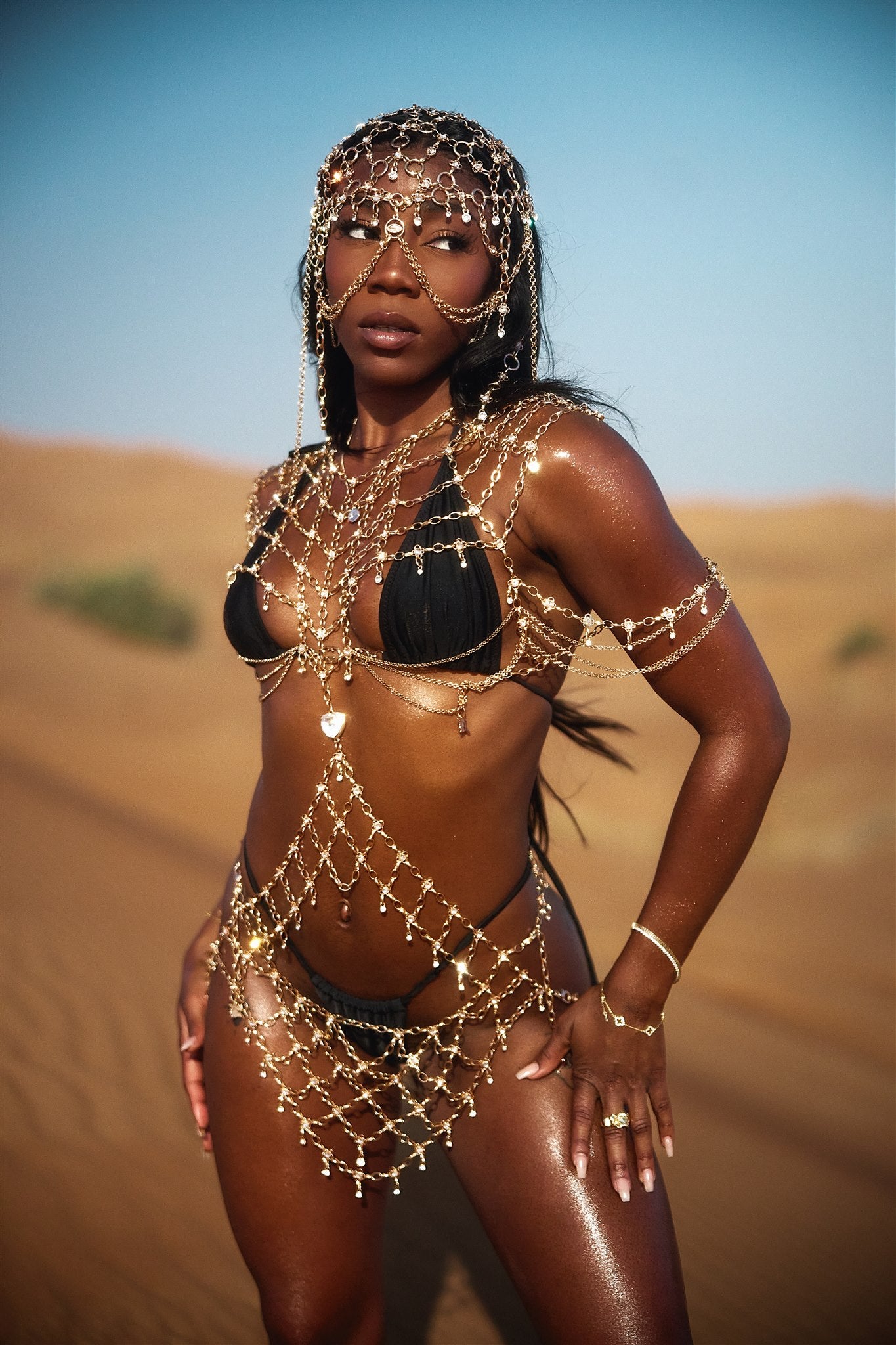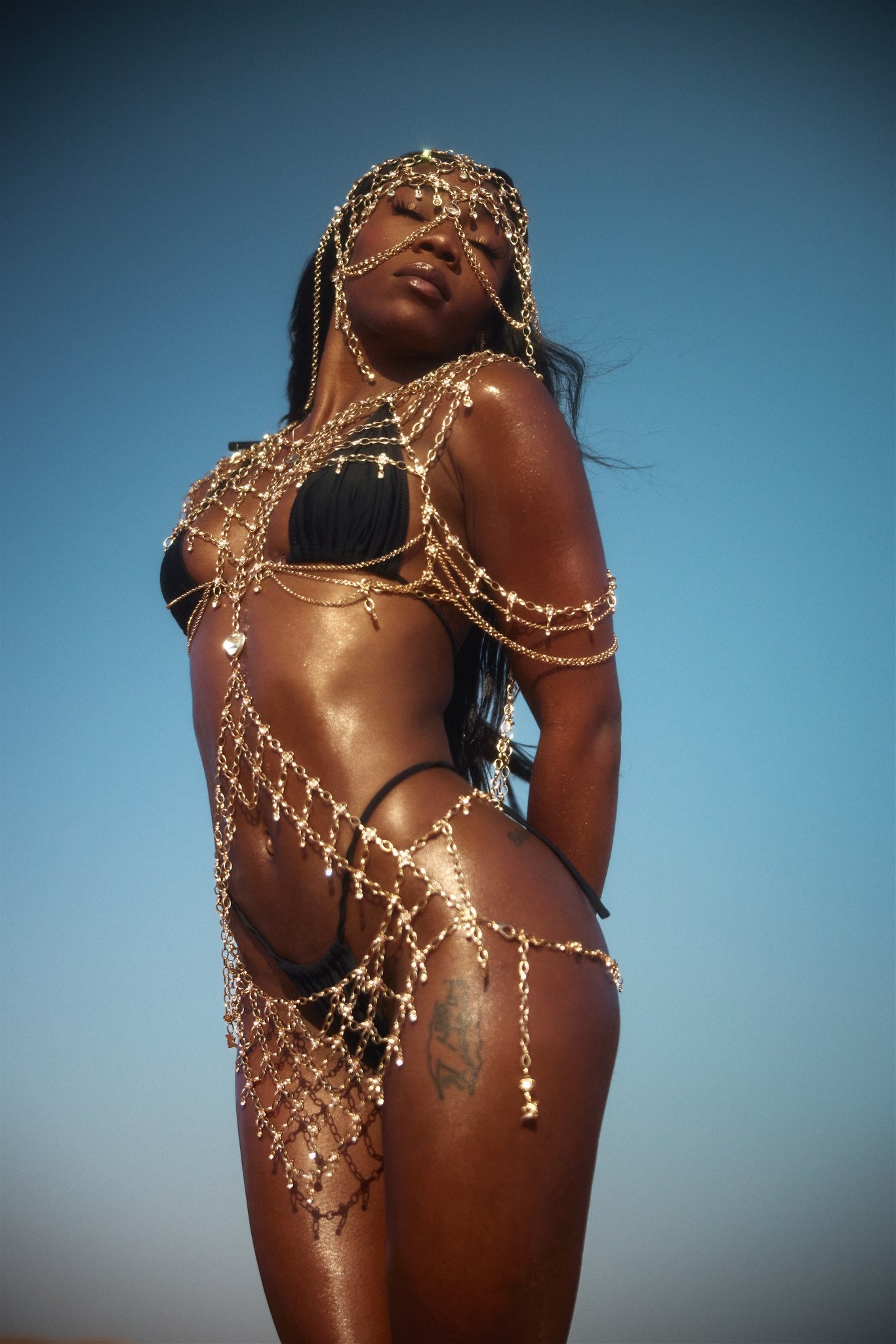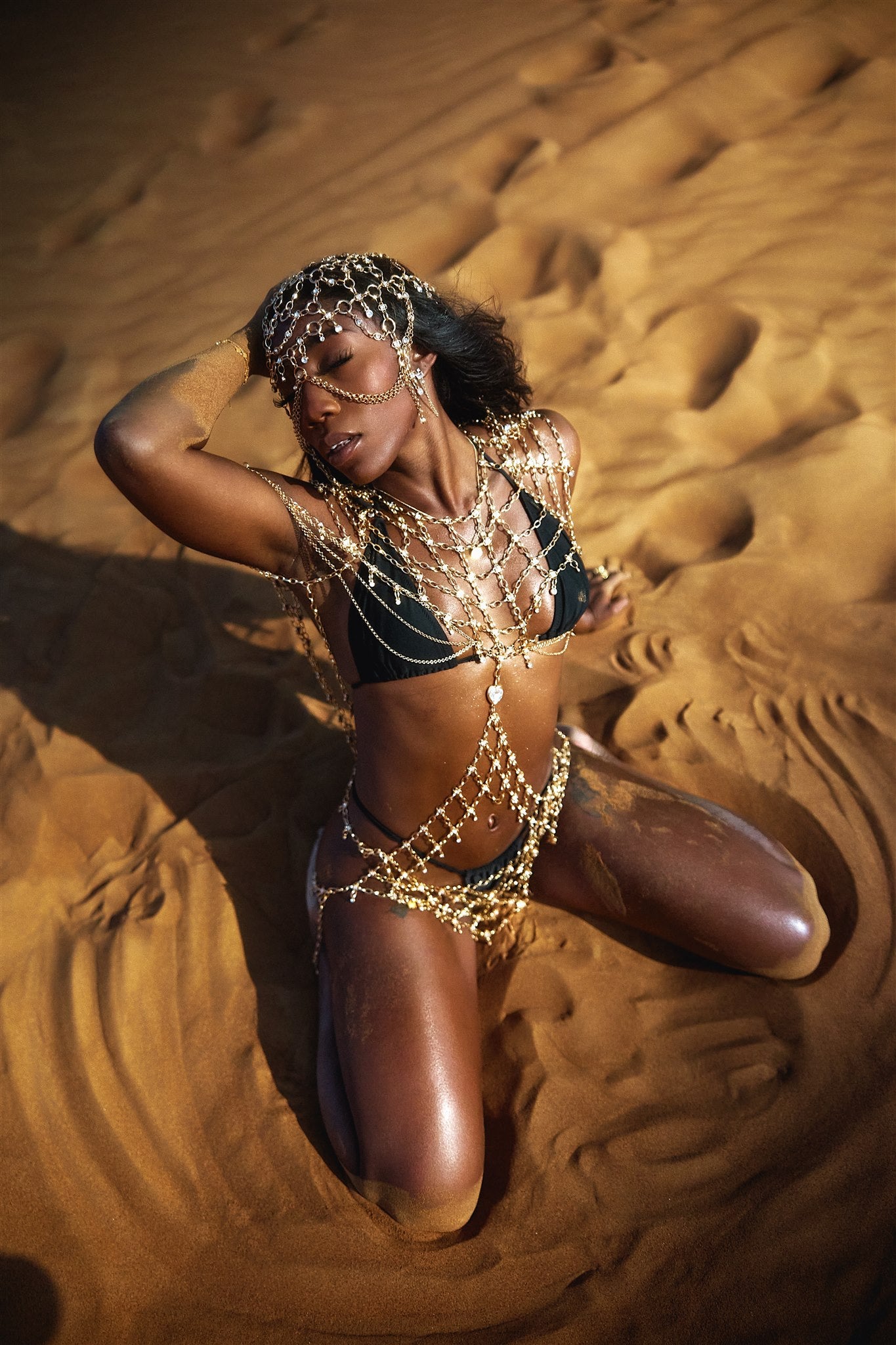Artemisia Body Chain & Headpiece Set
Artemisia Body Chain & Headpiece Set
When one statement piece isn’t enough, go for the full effect. The Artemisia Set combines the Artemisia Head Piece and Artemisia Body Chain for a head-to-waist look that’s pure magic. Designed to highlight your natural movement and silhouette, this duo was made to turn heads.
Available in:
-
Silver / White Stones (Shown)
Cool-toned radiance for a modern edge -
Gold / White Stones
A luminous golden glow that feels like royalty -
Gunmetal / White Stones
Dark and mysterious with celestial shine -
Gunmetal / Red Stones
A fierce, moody mix of deep gunmetal and fiery red
Wear them together or style them separately—either way, you’ll steal the spotlight.
Couldn't load pickup availability




Artemisia Facts & Bio
Who was Artemisia and Why was She Famous?
A queen and naval commander of ancient Greece.
Lion: A symbol of strength, courage, and leadership, lions are often linked to royalty and warrior figures. Artemisia’s bravery and leadership on the battlefield could be represented by this noble creature.
Ship: Artemisia was also a naval commander, and her most famous contribution to the Persian fleet during the Battle of Salamis was on the sea. A ship represents her command of the naval forces and her tactical prowess in battle.
Chariot: A common symbol for powerful leaders and warriors, the chariot would represent Artemisia’s role in warfare and her leadership in battle, especially as she led her forces in various military actions.
Eagle: As a symbol of keen vision, sovereignty, and far-reaching power, the eagle also reflects Artemisia’s strategic insight and her status as a leader of her people.
Crown: The crown is a symbol of her royal status as the queen of Caria, signifying her authority, wisdom, and leadership both in battle and governance.
Swords or Spears: Weapons commonly associated with warriors, these would represent Artemisia's combat abilities and her fierce role in battle. These tools of war symbolize her strength in battle and her mastery in leading troops.
Greek Helmet: As a leader in the Persian fleet during the Greco-Persian wars, a Greek-style helmet could symbolize her military role and recognition as a commander during that historic conflict.
Notable Quotes
Artemisia I of Caria's own words are not widely recorded in historical texts, but one of the most famous quotes attributed to her comes from the Histories by Herodotus. She spoke these words during the Greco-Persian Wars, advising King Xerxes:
“My heart is not moved by your words, but I speak from a sense of duty.”
This quote reflects her sense of loyalty and strategic wisdom. Despite any personal emotions, she was committed to her duties as a commander, demonstrating her pragmatic and resolute nature.
Another famous quote attributed to her, also from Herodotus, captures her fierce resolve:
“I will not fall, I will fight for what I believe.”
This quote echoes her determination, strength, and warrior spirit, showing her unyielding nature in the face of adversity.




